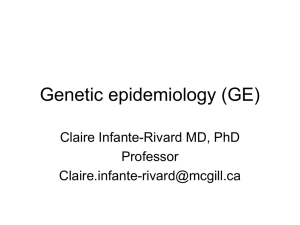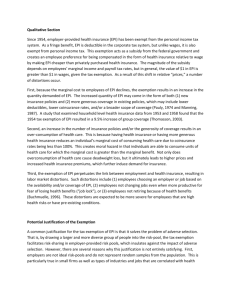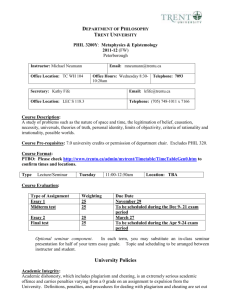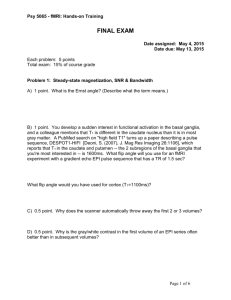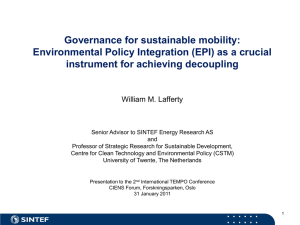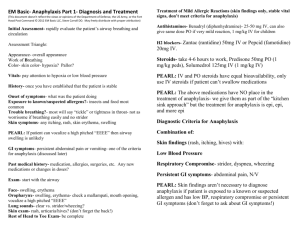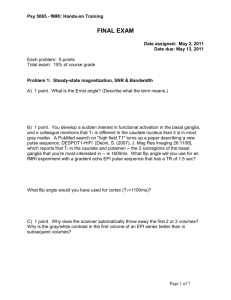Qualitiative Section
advertisement
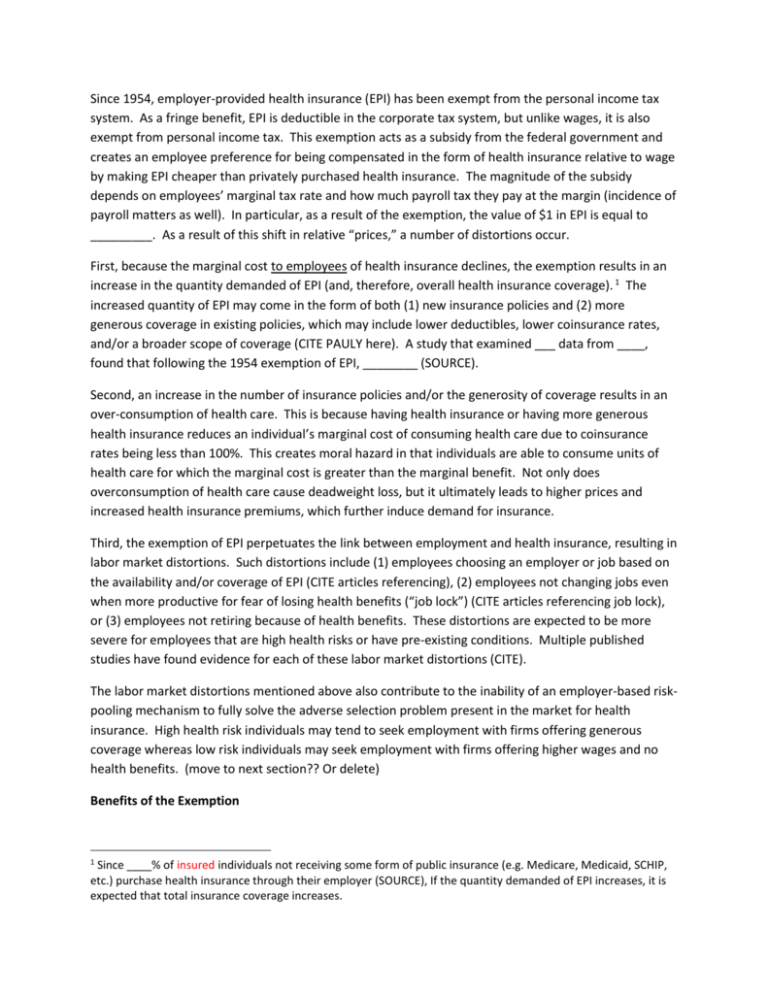
Since 1954, employer-provided health insurance (EPI) has been exempt from the personal income tax system. As a fringe benefit, EPI is deductible in the corporate tax system, but unlike wages, it is also exempt from personal income tax. This exemption acts as a subsidy from the federal government and creates an employee preference for being compensated in the form of health insurance relative to wage by making EPI cheaper than privately purchased health insurance. The magnitude of the subsidy depends on employees’ marginal tax rate and how much payroll tax they pay at the margin (incidence of payroll matters as well). In particular, as a result of the exemption, the value of $1 in EPI is equal to _________. As a result of this shift in relative “prices,” a number of distortions occur. First, because the marginal cost to employees of health insurance declines, the exemption results in an increase in the quantity demanded of EPI (and, therefore, overall health insurance coverage). 1 The increased quantity of EPI may come in the form of both (1) new insurance policies and (2) more generous coverage in existing policies, which may include lower deductibles, lower coinsurance rates, and/or a broader scope of coverage (CITE PAULY here). A study that examined ___ data from ____, found that following the 1954 exemption of EPI, ________ (SOURCE). Second, an increase in the number of insurance policies and/or the generosity of coverage results in an over-consumption of health care. This is because having health insurance or having more generous health insurance reduces an individual’s marginal cost of consuming health care due to coinsurance rates being less than 100%. This creates moral hazard in that individuals are able to consume units of health care for which the marginal cost is greater than the marginal benefit. Not only does overconsumption of health care cause deadweight loss, but it ultimately leads to higher prices and increased health insurance premiums, which further induce demand for insurance. Third, the exemption of EPI perpetuates the link between employment and health insurance, resulting in labor market distortions. Such distortions include (1) employees choosing an employer or job based on the availability and/or coverage of EPI (CITE articles referencing), (2) employees not changing jobs even when more productive for fear of losing health benefits (“job lock”) (CITE articles referencing job lock), or (3) employees not retiring because of health benefits. These distortions are expected to be more severe for employees that are high health risks or have pre-existing conditions. Multiple published studies have found evidence for each of these labor market distortions (CITE). The labor market distortions mentioned above also contribute to the inability of an employer-based riskpooling mechanism to fully solve the adverse selection problem present in the market for health insurance. High health risk individuals may tend to seek employment with firms offering generous coverage whereas low risk individuals may seek employment with firms offering higher wages and no health benefits. (move to next section?? Or delete) Benefits of the Exemption 1 Since ____% of insured individuals not receiving some form of public insurance (e.g. Medicare, Medicaid, SCHIP, etc.) purchase health insurance through their employer (SOURCE), If the quantity demanded of EPI increases, it is expected that total insurance coverage increases. More people buy health insurance (good to have insurance) -But some people don’t need or want (still causes DWL) Creates more diverse risk pools by inducing low risk individuals to buy insurance through employers (reduce expected cost per person, so lower premiums for high risk) – solves adverse selection -but really just cross-subsidy (and wouldn’t universal catastrophic coverage have similar effect but be much more efficient b/c not having to pay health costs of low-risk people too) Supports employer-based risk-pooling system (better than non-group based insurance – pooling risk and lower admin costs) -not perfect risk-pooling OTHER REASONS TO JUSTIFY WHY EPI SHOULD BE EXEMPT????? Results of Removing Exemption As a result of removing the exemption, we expect the following to occur: (1) decreased demand for EPI, in the form of reduced policies and decreased generosity of coverage (higher deductibles, higher coinsurance rates, and more narrow scopes of coverage) (2) Increase in wages. Removing the exemption reduces employee preference for compensation in the form of EPI as opposed to wages (EPI will still exist in the short-run and to the extent that there are advantages to EPI over privately purchased health insurance – reduced administrative costs, risk-pooling, employer ability to negotiate reduced prices / act as a good agent, no search costs for employee, etc.). The amount of the wage increase will depend on (1) incidence of the subsidy and (2) price elasticity of demand for EPI (anything else???). (3) decreased demand for health care. As the generosity of health insurance coverage declines, the private marginal cost of health care for insureds will increase, resulting in reduced consumption. (Effect on R&D as well ….) (4) Reduction in labor market distortions (to extent link between employment and health insurance is reduced). Effect may be small in short-run because of sticky wages and contracts. In the long-run, reduction should be greater.

